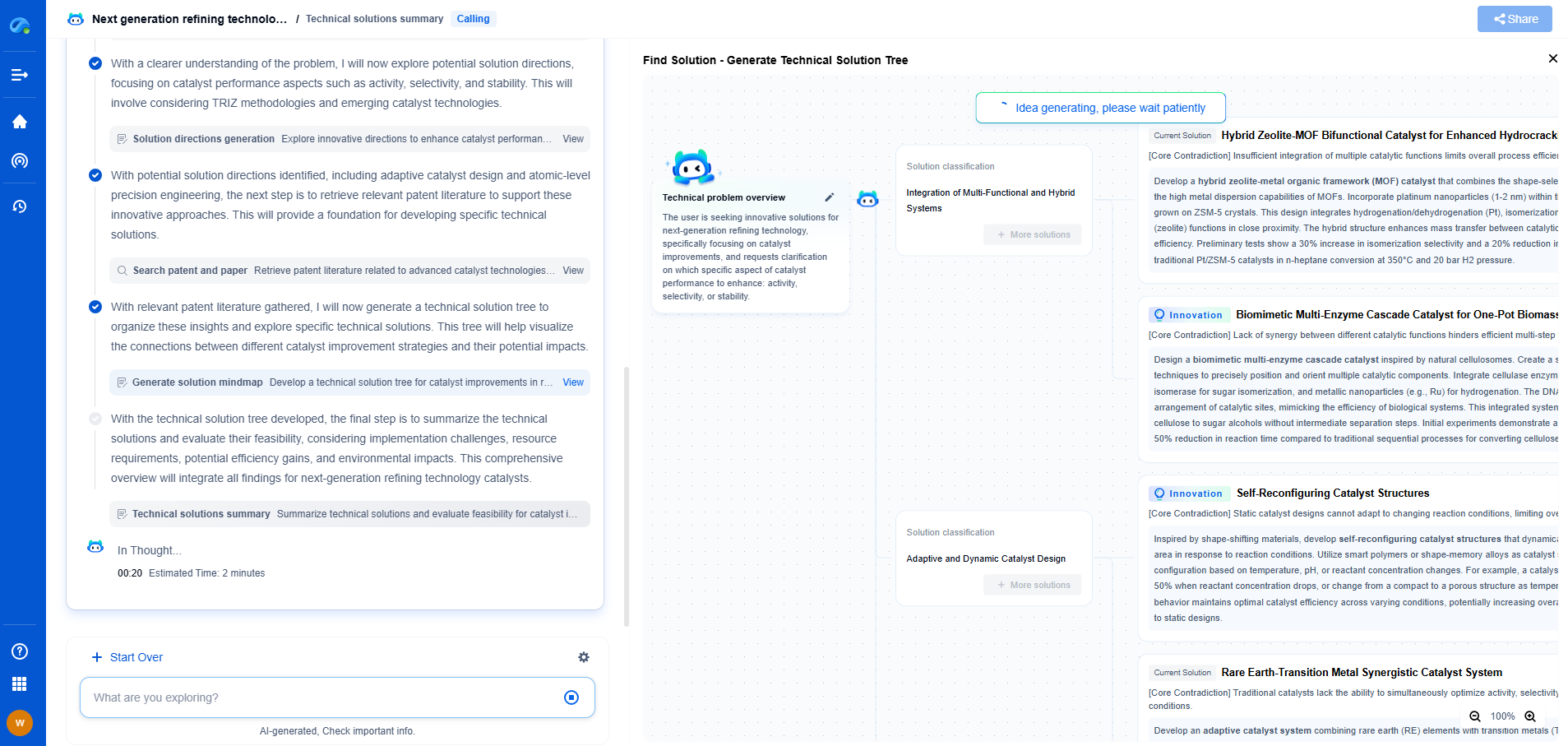Different Calibration Methods for Analog vs Digital Measurement Systems
JUL 17, 2025 |
Understanding Analog and Digital Measurement Systems
Before delving into calibration methods, it's essential to distinguish between analog and digital measurement systems. Analog systems represent data in continuous signals, with values that change smoothly over a range. Think of a mercury thermometer or a traditional voltmeter; they provide a continuous range of values. Digital systems, however, represent data in discrete steps, often using binary code. Devices like digital clocks or digital multimeters display data in a numerical format.
Calibration in Analog Measurement Systems
Analog systems, despite their simplicity and longevity, present unique calibration challenges. They are prone to drift, nonlinearities, and environmental influences. Calibration for analog systems often involves the following methods:
1. **Zero Adjustment**: This is often the first step in calibrating any analog device. The device is set to read zero when a zero measurement is applied. For instance, in an analog balance scale, ensuring that the pointer reads zero without any weight ensures accurate readings.
2. **Span Calibration**: This involves adjusting the device to ensure it provides accurate readings across its entire range. By applying known reference standards at both the low and high ends of the measurement scale, users can adjust the device to ensure linearity.
3. **Temperature Compensation**: Analog devices can be heavily influenced by temperature variations. Employing temperature compensation methods, such as using materials with low thermal expansion or incorporating temperature correction factors, can enhance accuracy.
4. **Linearity Testing**: Ensures that the response of the device is linear across its range. Nonlinearity can be corrected through mechanical adjustments or using correction charts.
Calibration in Digital Measurement Systems
Digital systems, while often considered more accurate and reliable, also require regular calibration to maintain their precision. Here are common calibration methods for digital systems:
1. **Software Calibration**: Unlike analog systems, digital devices often allow for software-based calibration. This involves adjusting the digital data through software algorithms to match the known standards.
2. **Offset and Gain Calibration**: Similar to zero and span adjustments in analog systems, digital devices require offset and gain calibration to account for any discrepancies in sensor readings and ensure accurate data output.
3. **Self-Calibration Features**: Many modern digital devices come equipped with self-calibration features, which can automatically adjust and calibrate the system based on preset conditions. This reduces the need for manual intervention.
4. **Environmental Compensation**: Digital systems can also be affected by environmental factors like temperature and humidity. Integrating sensors that monitor these variables and adjust the measurements accordingly can enhance accuracy.
Challenges and Considerations
Despite their advances, both analog and digital calibration processes face certain challenges. For analog systems, aging components and manual calibration can lead to errors, while digital systems may face issues related to software bugs or outdated algorithms. It is crucial to regularly maintain and update both types of systems to ensure they deliver precise measurements.
Moreover, while digital systems often boast self-calibration capabilities, they can still require expert intervention for complex issues. Analog systems, on the other hand, may demand meticulous attention to physical components, which can be labor-intensive.
Conclusion
In conclusion, both analog and digital measurement systems have distinct calibration needs. Analog systems require manual adjustments and considerations for environmental factors, whereas digital systems benefit from software-based solutions and technological advancements. Regular maintenance and an understanding of each system's unique challenges are critical for ensuring accurate and reliable measurements. Whether dealing with the nostalgic charm of analog or the modern precision of digital, effective calibration remains key to optimal performance.
Whether you’re developing multifunctional DAQ platforms, programmable calibration benches, or integrated sensor measurement suites, the ability to track emerging patents, understand competitor strategies, and uncover untapped technology spaces is critical.
Patsnap Eureka, our intelligent AI assistant built for R&D professionals in high-tech sectors, empowers you with real-time expert-level analysis, technology roadmap exploration, and strategic mapping of core patents—all within a seamless, user-friendly interface.
🧪 Let Eureka be your digital research assistant—streamlining your technical search across disciplines and giving you the clarity to lead confidently. Experience it today.
- R&D
- Intellectual Property
- Life Sciences
- Materials
- Tech Scout
- Unparalleled Data Quality
- Higher Quality Content
- 60% Fewer Hallucinations
Browse by: Latest US Patents, China's latest patents, Technical Efficacy Thesaurus, Application Domain, Technology Topic, Popular Technical Reports.
© 2025 PatSnap. All rights reserved.Legal|Privacy policy|Modern Slavery Act Transparency Statement|Sitemap|About US| Contact US: help@patsnap.com

